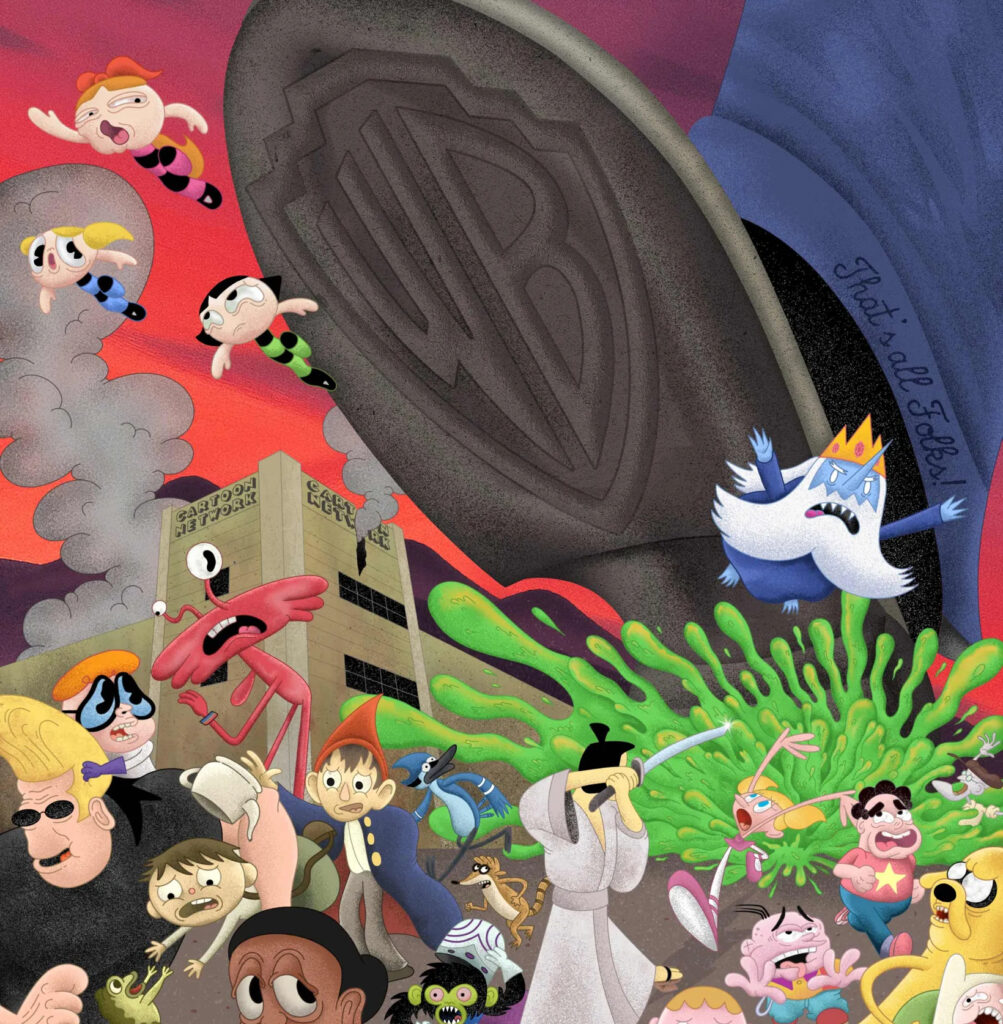The once-vibrant halls of Cartoon Network’s Burbank studio now stand eerily empty, a ghostly monument to an era when the network redefined animation for a generation. In August 2024, a group of animators, clad in Mission: Impossible-style black outfits, crept through the abandoned building—a symbolic heist to reclaim the creative spirit of a place that had birthed cultural touchstones like “Sheep in the Big City” and nurtured auteurs like Mo Willems . This clandestine visit underscores a grim reality: Cartoon Network, the irreverent animation factory that once dominated children’s programming, is gasping for survival. Under Warner Bros. Discovery CEO David Zaslav’s austerity-driven pivot away from kids’ streaming content, the network’s future hangs in the balance, its legacy threatened by corporate cost-cutting and the existential crisis facing linear television.
The Golden Age and the Creative Alchemy of Cartoon Network
Cartoon Network’s rise in the late 1990s and early 2000s was fueled by a rare alchemy of artistic freedom and commercial success. Shows like “Sheep in the Big City” (2000–2002)—a surreal, meta-narrative comedy about a sheep evading a bumbling military—exemplified its willingness to embrace absurdity and sophistication simultaneously. The series, created by Mo Willems, blended Rocky and Bullwinkle-esque satire with avant-garde visual rhetoric, proving that children’s animation could be both intellectually daring and wildly entertaining . The network’s “Cartoon Cartoons” lineup, including “Dexter’s Laboratory” and “The Powerpuff Girls”, became synonymous with a renaissance in animated storytelling, where creators like Genndy Tartakovsky and Craig McCracken were given unprecedented creative latitude.
Yet this golden age was not just about ratings; it was a talent incubator. Willems, who later authored bestselling children’s books, and Pendleton Ward, creator of “Adventure Time”, emerged from Cartoon Network’s ecosystem. The network’s Burbank studio was a crucible for experimentation, where animators could pitch unorthodox ideas without the constraints of traditional network executives. This culture birthed a generation of storytellers who would dominate animation for decades.
The Unraveling: Streaming, Corporate Restructuring, and Creative Erosion
The decline of Cartoon Network mirrors the broader collapse of cable television, but its fate has been accelerated by Warner Bros. Discovery’s (WBD) strategic retreat from children’s streaming. Under Zaslav, WBD has slashed budgets, shelved completed projects (e.g., Batgirl), and prioritized cost-cutting over creative investment. The Burbank studio’s shuttering is emblematic of this shift—a physical manifestation of the network’s diminished stature .
The rise of streaming further destabilized Cartoon Network’s model. While competitors like Netflix and Disney+ invested heavily in animated content, WBD’s Max (formerly HBO Max) relegated kids’ programming to a secondary tier, stripping it of promotional resources. Unlike Disney’s cohesive Marvel and Star Wars animated universes, Cartoon Network’s offerings became fragmented, with legacy IP like “Teen Titans Go!” recycled ad nauseam while original projects languished. The network’s identity—once defined by risk-taking—faded into a haze of algorithm-driven safety.
Moreover, the animation industry’s labor disputes exposed deeper fissures. The 2023 Writers Guild of America strike highlighted the precarious conditions faced by animators, many of whom had honed their craft at Cartoon Network. As studios outsourced production to cheaper overseas studios (e.g., Rough Draft Korea, which animated “Sheep in the Big City” ), the connective, artist-driven ethos of the network’s heyday eroded.
The Cultural Void and the Fight for Relevancy
Cartoon Network’s decline leaves a cultural void. Its programming once served as a gateway for young audiences to engage with complex themes—“Sheep in the Big City” parodied militarism and media manipulation, while “Adventure Time”explored existential loneliness. Today, the network’s successors (e.g., YouTube Kids, TikTok) prioritize bite-sized, algorithmically optimized content over narrative depth. The loss of Cartoon Network’s curatorial vision risks homogenizing children’s media, replacing subversive humor with sanitized, advertiser-friendly fodder.
Yet there are flickers of resistance. The animators’ clandestine visit to the Burbank studio reflects a grassroots effort to preserve the network’s legacy. Independent animation collectives, inspired by Cartoon Network’s heyday, are experimenting with web-based distribution, echoing the DIY spirit of early 2000s creators. Meanwhile, archivists and fans have digitized obscure shows, ensuring that “Sheep in the Big City’s”absurdist brilliance isn’t lost to corporate neglect .
A Requiem or a Revival?
Cartoon Network’s fate is a microcosm of the creative destruction reshaping media. Its decline underscores the tension between art and commerce, between the cult of IP and the cult of originality. The network’s survival may hinge on WBD recognizing that its value lies not just in library content but in its role as a cultural innovator. Without intervention, Cartoon Network risks becoming a relic—a cautionary tale of how corporate myopia can extinguish creative fire.
But history offers hope. The network’s scrappy origins—born from Ted Turner’s gamble on Hanna-Barbera’s back catalog—prove that reinvention is possible. If Warner Bros. Discovery can rekindle the anarchic spirit of “Sheep in the Big City”and reinvest in original voices, Cartoon Network’s last gasp might yet become a new breath. The alternative—a world where children’s animation is reduced to content farms and brand extensions—is a future too bleak to animate.
No comments yet.







